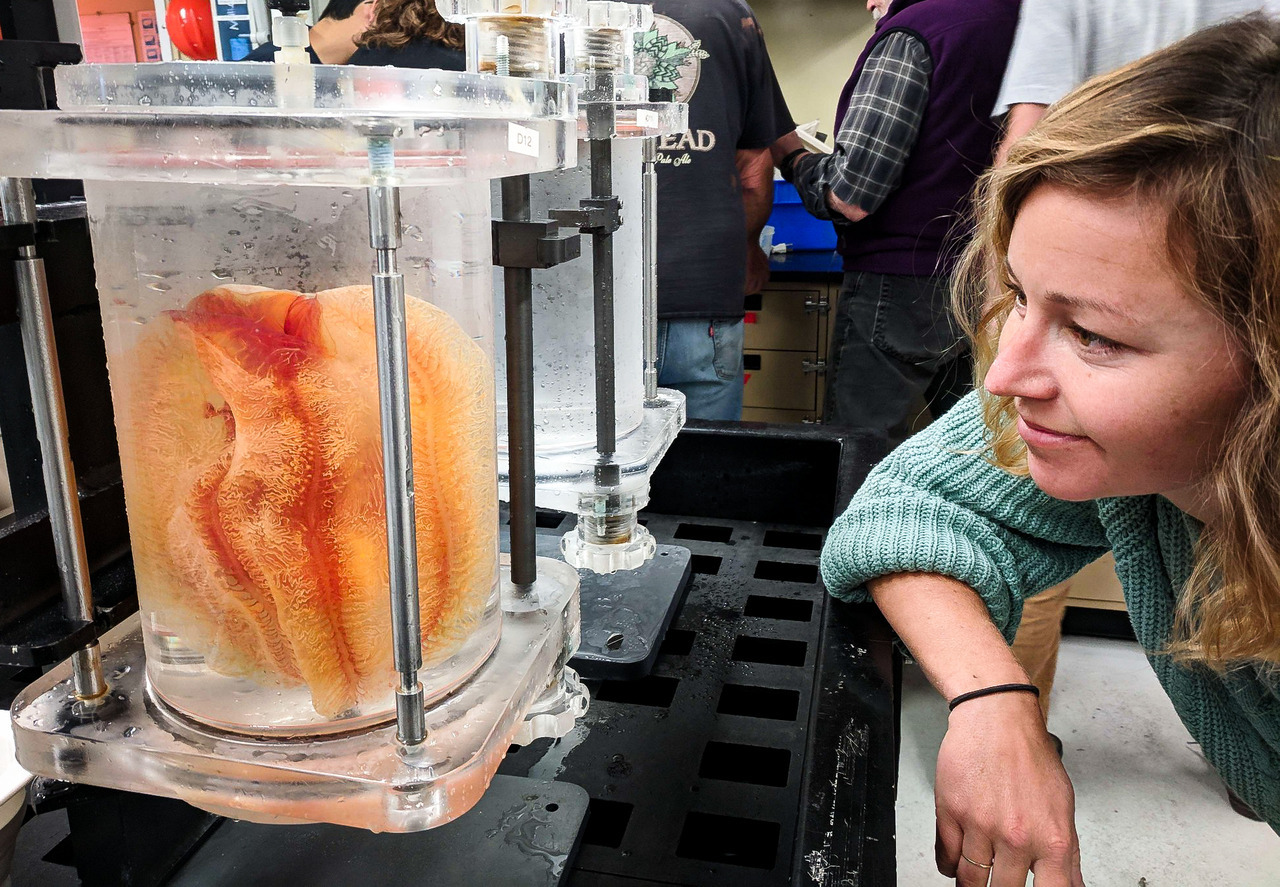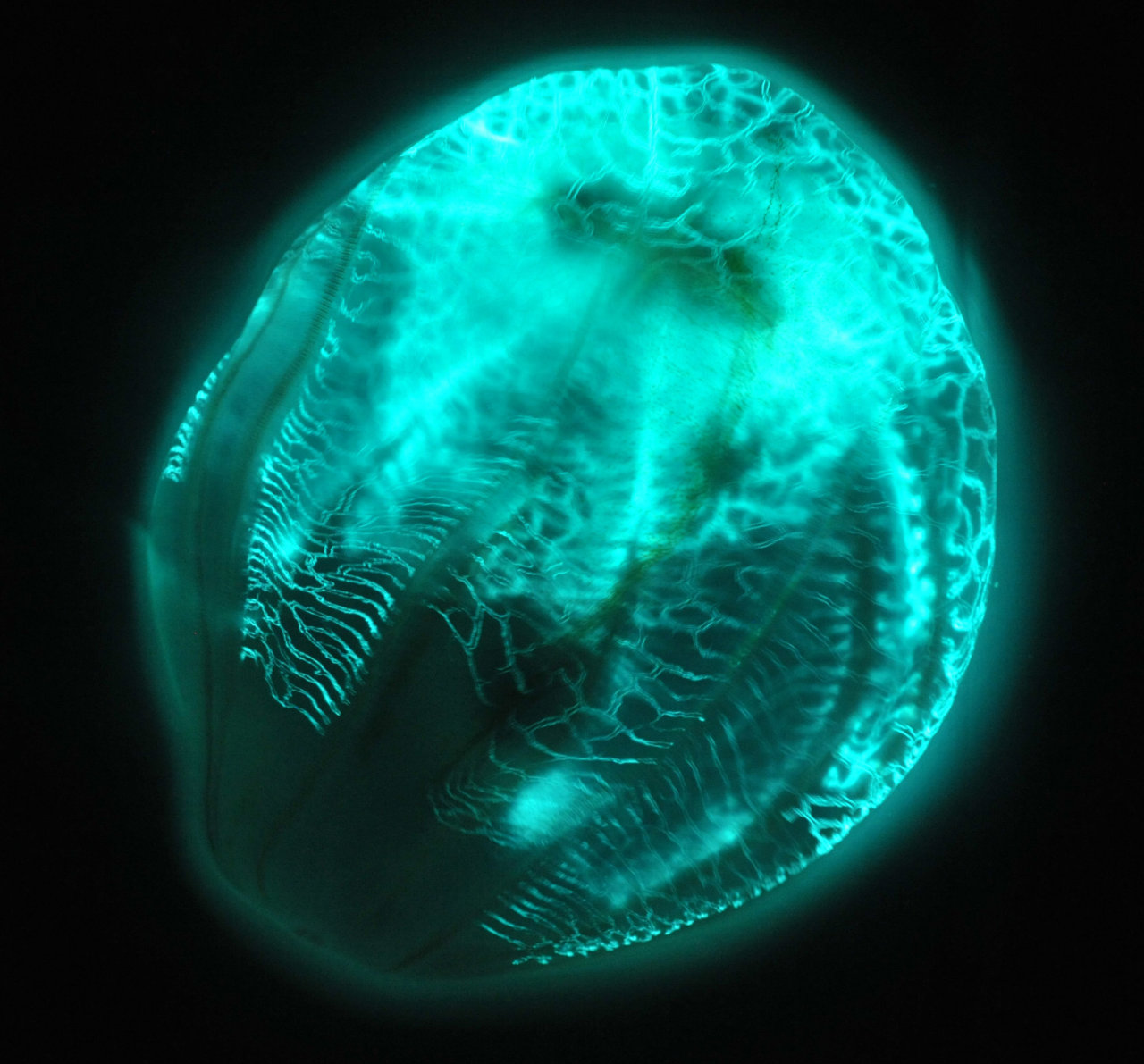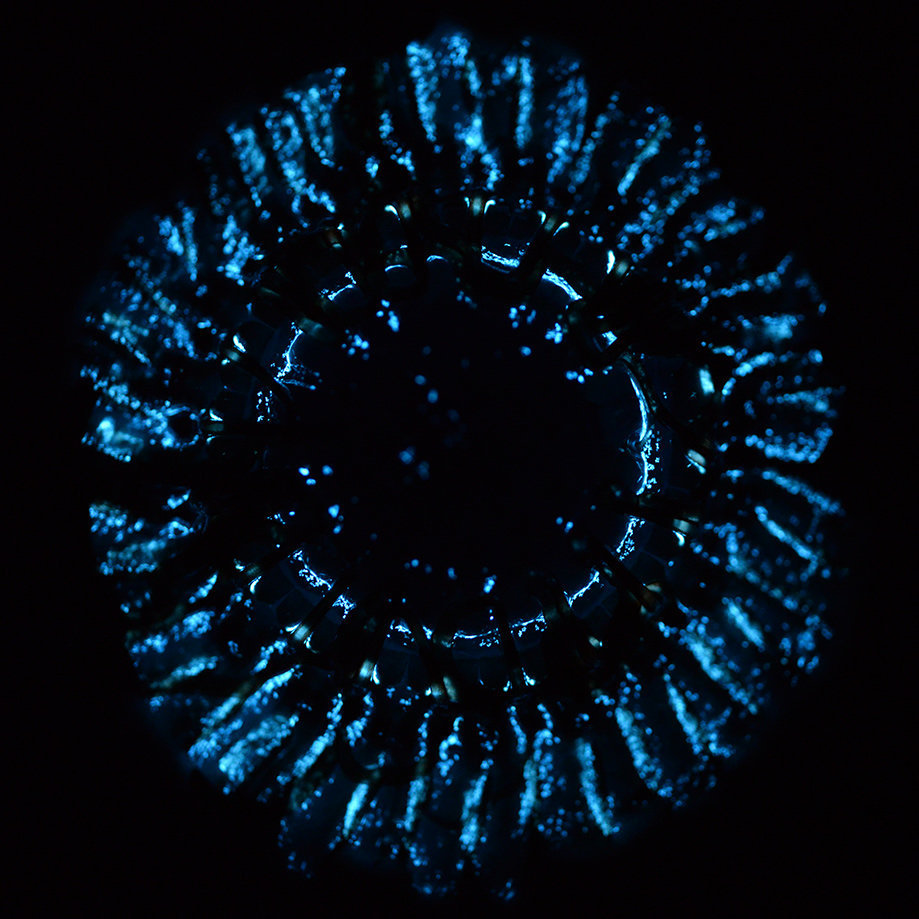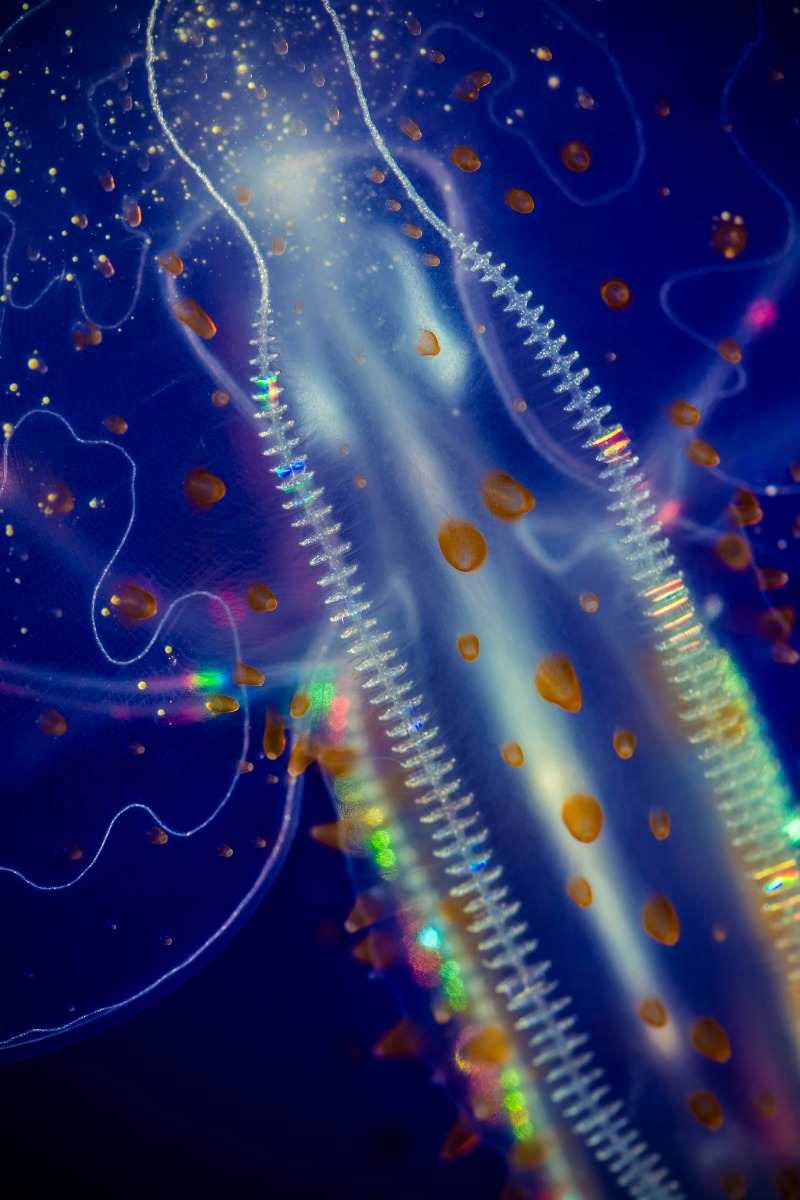Question: Why do comb jellies have rainbows?
Answer: An extravagant hair-do!
Comb jellies—also known as ctenophores, or “comb bearers”—swim with eight pulsating rows of hair-like cilia. Fused at their bases like the teeth of a comb, successive plates of cilia beat from mouth to rear to propel the animal through the water.

Humans also have beating cilia—our lungs are cleared of mucus and dirt by these biological shag rugs, for example. But comb jellies have the largest cilia of any organism and are the largest animals to use these little paddles to move about.

So fine are the cilia that, as white light passes over the comb rows, the hairs block and drag and warp the light beam. As the light peels around the cilia—like an ocean wave wrapping around a rocky point—different colors are bent into view along the comb row. So why do comb jellies have rainbows? Our exhibit lights are being diffracted into their composite colors!
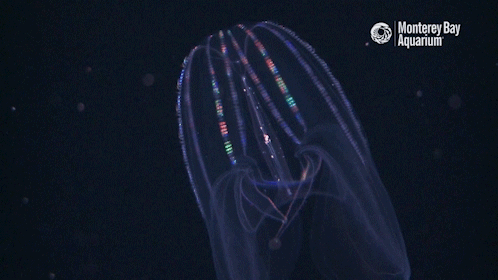
In the wild, comb jellies don’t display the same striking rainbows without strong sunlight or a large camera strobe. However, most comb jellies do produce their own faint light—bioluminescence—visible at night when the lights are off. Brilliant!
We hope you enjoyed this light reading and weren’t too diffracted from your work. Don’t hesitate to comb over here to check these jellies out for yourself!



